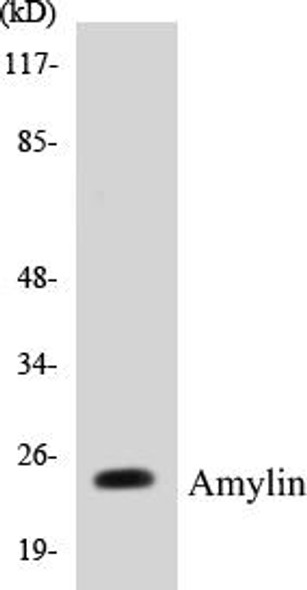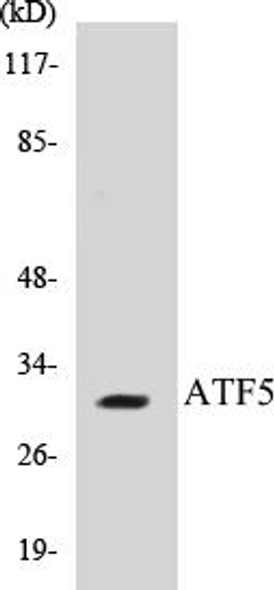HS1 Colorimetric Cell-Based ELISA Kit (CBCAB00698)
- SKU:
- CBCAB00698
- Product Type:
- ELISA Kit
- ELISA Type:
- Cell Based
- Reactivity:
- Human
- Detection Method:
- Colorimetric
Description
HS1 Colorimetric Cell-Based ELISA Kit
The Human ANG (Angiogenin) Colorimetric Cell-Based ELISA Kit from Assay Genie is a cutting-edge tool for accurately measuring angiogenin levels in human samples. This kit is designed for use with serum, plasma, and cell culture supernatants, making it versatile for a wide range of research applications. With high sensitivity and specificity, researchers can trust in the reliability and reproducibility of their results.Angiogenin is a key player in angiogenesis, the process of forming new blood vessels.
Its influence on cell proliferation makes it a critical factor in diseases like cancer, cardiovascular issues, and neurodegenerative disorders. By using this ELISA kit to monitor angiogenin levels, researchers can gain valuable insights into these conditions, potentially leading to new therapeutic approaches. Trust in the Human ANG Colorimetric Cell-Based ELISA Kit for accurate and informative results in your research.
| Product Name: | HS1 Colorimetric Cell-Based ELISA |
| Product Code: | CBCAB00698 |
| ELISA Type: | Cell-Based |
| Target: | HS1 |
| Reactivity: | Human |
| Dynamic Range: | > 5000 Cells |
| Detection Method: | Colorimetric 450 nmStorage/Stability:4°C/6 Months |
| Format: | 96-Well Microplate |
The HS1 Colorimetric Cell-Based ELISA Kit is a convenient, lysate-free, high throughput and sensitive assay kit that can detect HS1 protein expression profile in cells. The kit can be used for measuring the relative amounts of HS1 in cultured cells as well as screening for the effects that various treatments, inhibitors (ie siRNA or chemicals), or activators have on HS1.
Qualitative determination of HS1 concentration is achieved by an indirect ELISA format. In essence, HS1 is captured by HS1-specific primary antibodies while the HRP-conjugated secondary antibodies bind the Fc region of the primary antibody. Through this binding, the HRP enzyme conjugated to the secondary antibody can catalyze a colorimetric reaction upon substrate addition. Due to the qualitative nature of the Cell-Based ELISA, multiple normalization methods are needed:
| 1. | A monoclonal antibody specific for human GAPDH is included to serve as an internal positive control in normalizing the target absorbance values. |
| 2. | Following the colorimetric measurement of HRP activity via substrate addition, the Crystal Violet whole-cell staining method may be used to determine cell density. After staining, the results can be analysed by normalizing the absorbance values to cell amounts, by which the plating difference can be adjusted. |
| Database Information: | Gene ID: 3059, UniProt ID: P14317, OMIM: 601306, Unigene: Hs.14601 |
| Gene Symbol: | HCLS1 |
| Sub Type: | None |
| UniProt Protein Function: | HS1: Substrate of the antigen receptor-coupled tyrosine kinase. Plays a role in antigen receptor signaling for both clonal expansion and deletion in lymphoid cells. May also be involved in the regulation of gene expression. Associates with the SH2 and SH3 domains of LCK. Binding to he LCK SH3 domain occurs constitutively, while binding to the LCK SH2 domain occurs only upon TCR stimulation. A similar binding pattern was observed with LYN, but not with FYN in which the FYN SH2 region associates upon TCR stimulation but the FYN SH3 region does not associate regardless of TCR stimulation. Directly associates with HAX1, through binding to its C-terminal region. Interacts with HS1BP3. Interacts with FES/FPS. Interacts (via SH2 domain) with FGR. Forms a multiprotein complex with LYN and ANKRD54. Expressed only in tissues and cells of hematopoietic origin. |
| UniProt Protein Details: | Protein type:Motility/polarity/chemotaxis; Adaptor/scaffold Chromosomal Location of Human Ortholog: 3q13 Cellular Component: cytoplasm; nucleus; transcription factor complex Molecular Function:protein binding; protein kinase binding Biological Process: erythrocyte differentiation; positive regulation of cell proliferation; positive regulation of granulocyte differentiation; positive regulation of peptidyl-serine phosphorylation; positive regulation of peptidyl-tyrosine phosphorylation; positive regulation of phosphoinositide 3-kinase cascade; positive regulation of protein kinase B signaling cascade; positive regulation of transcription factor import into nucleus; positive regulation of transcription from RNA polymerase II promoter; positive regulation of tyrosine phosphorylation of STAT protein; regulation of actin filament polymerization; regulation of transcription, DNA-dependent; response to hormone stimulus |
| UniProt Code: | P14317 |
| NCBI GenInfo Identifier: | 317373440 |
| NCBI Gene ID: | 3059 |
| NCBI Accession: | P14317.3 |
| UniProt Secondary Accession: | P14317,Q53Y93, Q6IBK9, Q9UDK0, B4DQ69, |
| UniProt Related Accession: | P14317 |
| Molecular Weight: | 24,008 Da |
| NCBI Full Name: | Hematopoietic lineage cell-specific protein |
| NCBI Synonym Full Names: | hematopoietic cell-specific Lyn substrate 1 |
| NCBI Official Symbol: | HCLS1 |
| NCBI Official Synonym Symbols: | HS1; p75; CTTNL; lckBP1 |
| NCBI Protein Information: | hematopoietic lineage cell-specific protein |
| UniProt Protein Name: | Hematopoietic lineage cell-specific protein |
| UniProt Synonym Protein Names: | Hematopoietic cell-specific LYN substrate 1; LckBP1; p75 |
| Protein Family: | HCLS1-binding protein |
| UniProt Gene Name: | HCLS1 |
| UniProt Entry Name: | HCLS1_HUMAN |
| Component | Quantity |
| 96-Well Cell Culture Clear-Bottom Microplate | 2 plates |
| 10X TBS | 24 mL |
| Quenching Buffer | 24 mL |
| Blocking Buffer | 50 mL |
| 15X Wash Buffer | 50 mL |
| Primary Antibody Diluent | 12 mL |
| 100x Anti-Phospho Target Antibody | 60 µL |
| 100x Anti-Target Antibody | 60 µL |
| Anti-GAPDH Antibody | 60 µL |
| HRP-Conjugated Anti-Rabbit IgG Antibody | 12 mL |
| HRP-Conjugated Anti-Mouse IgG Antibody | 12 mL |
| SDS Solution | 12 mL |
| Stop Solution | 24 mL |
| Ready-to-Use Substrate | 12 mL |
| Crystal Violet Solution | 12 mL |
| Adhesive Plate Seals | 2 seals |
The following materials and/or equipment are NOT provided in this kit but are necessary to successfully conduct the experiment:
- Microplate reader able to measure absorbance at 450 nm and/or 595 nm for Crystal Violet Cell Staining (Optional)
- Micropipettes with capability of measuring volumes ranging from 1 µL to 1 ml
- 37% formaldehyde (Sigma Cat# F-8775) or formaldehyde from other sources
- Squirt bottle, manifold dispenser, multichannel pipette reservoir or automated microplate washer
- Graph paper or computer software capable of generating or displaying logarithmic functions
- Absorbent papers or vacuum aspirator
- Test tubes or microfuge tubes capable of storing ≥1 ml
- Poly-L-Lysine (Sigma Cat# P4832 for suspension cells)
- Orbital shaker (optional)
- Deionized or sterile water
*Note: Protocols are specific to each batch/lot. For the correct instructions please follow the protocol included in your kit.
| Step | Procedure |
| 1. | Seed 200 µL of 20,000 adherent cells in culture medium in each well of a 96-well plate. The plates included in the kit are sterile and treated for cell culture. For suspension cells and loosely attached cells, coat the plates with 100 µL of 10 µg/ml Poly-L-Lysine (not included) to each well of a 96-well plate for 30 minutes at 37°C prior to adding cells. |
| 2. | Incubate the cells for overnight at 37°C, 5% CO2. |
| 3. | Treat the cells as desired. |
| 4. | Remove the cell culture medium and rinse with 200 µL of 1x TBS, twice. |
| 5. | Fix the cells by incubating with 100 µL of Fixing Solution for 20 minutes at room temperature. The 4% formaldehyde is used for adherent cells and 8% formaldehyde is used for suspension cells and loosely attached cells. |
| 6. | Remove the Fixing Solution and wash the plate 3 times with 200 µL 1x Wash Buffer for five minutes each time with gentle shaking on the orbital shaker. The plate can be stored at 4°C for a week. |
| 7. | Add 100 µL of Quenching Buffer and incubate for 20 minutes at room temperature. |
| 8. | Wash the plate 3 times with 1x Wash Buffer for 5 minutes each time. |
| 9. | Add 200 µL of Blocking Buffer and incubate for 1 hour at room temperature. |
| 10. | Wash 3 times with 200 µL of 1x Wash Buffer for 5 minutes each time. |
| 11. | Add 50 µL of 1x primary antibodies (Anti-HS1 Antibody and/or Anti-GAPDH Antibody) to the corresponding wells, cover with Parafilm and incubate for 16 hours (overnight) at 4°C. If the target expression is known to be high, incubate for 2 hours at room temperature. |
| 12. | Wash 3 times with 200 µL of 1x Wash Buffer for 5 minutes each time. |
| 13. | Add 50 µL of 1x secondary antibodies (HRP-Conjugated AntiRabbit IgG Antibody or HRP-Conjugated Anti-Mouse IgG Antibody) to corresponding wells and incubate for 1.5 hours at room temperature. |
| 14. | Wash 3 times with 200 µL of 1x Wash Buffer for 5 minutes each time. |
| 15. | Add 50 µL of Ready-to-Use Substrate to each well and incubate for 30 minutes at room temperature in the dark. |
| 16. | Add 50 µL of Stop Solution to each well and read OD at 450 nm immediately using the microplate reader. |
(Additional Crystal Violet staining may be performed if desired – details of this may be found in the kit technical manual.)






